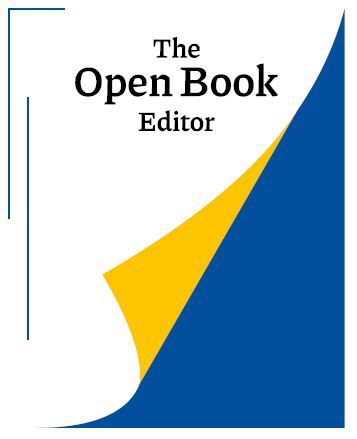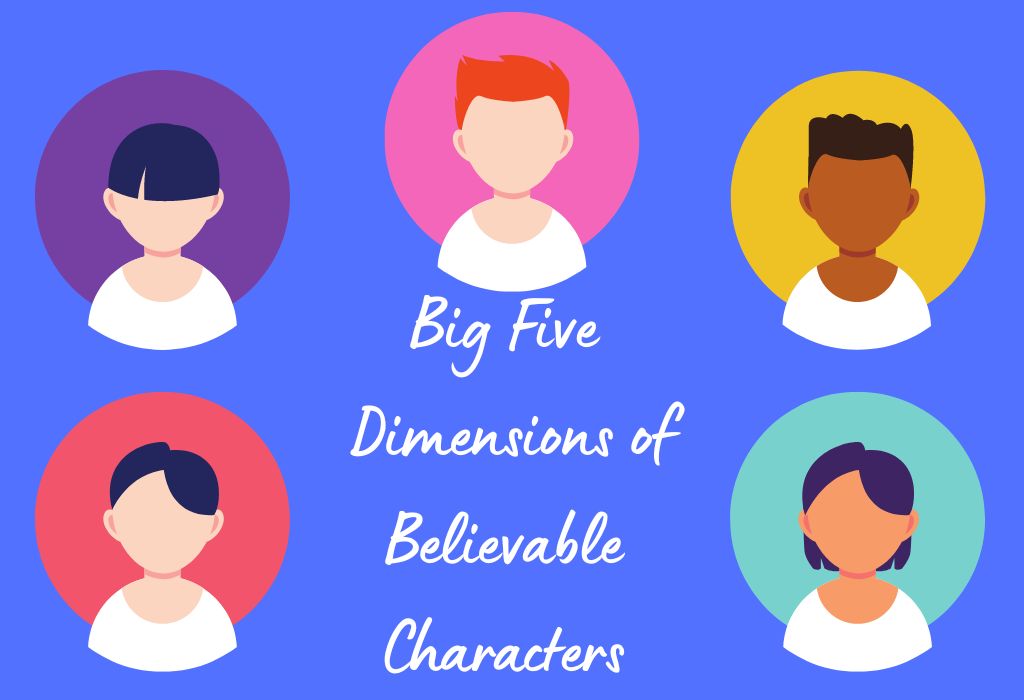The ‘Big Five’ is one of the tried-and-true methods for creating fictional people that feel real. Writing believable characters can be tough, which is why it’s important to take your time crafting characters that leap off the page.
An unbelievable character can pull your reader out of the story or, worse, cause them to put it down altogether. The ‘Big Five’ dimensions of believable characters can help you create characters with personality, whether you’re outlining your novel, looking to develop characters already in progress, or editing your book.
What are the ‘Big Five’ dimensions?
The ‘Big Five’ concerns the five principal categories of human personality traits as identified by psychologists in 1949. Each trait is a sliding scale from one extreme characteristic to another. The theory states that all of us possess varying characteristics of these five traits, and they combine to make up our unique personalities.
So, if real people possess characteristics from the ‘Big Five’ dimensions, it stands to reason that fictional characters should also possess them if they are to seem real to readers.
Of course, not every character needs to have every trait defined to seem real and believable. But if you can give your main protagonists and antagonists at least two or three dominant traits based on the ‘Big Five’, they’ll serve as a strong anchor to help to develop the characters further throughout the story.
Here are the ‘Big Five’ dimensions of believable characters, along with their inverse personality traits.
1. Extroversion vs. Introversion
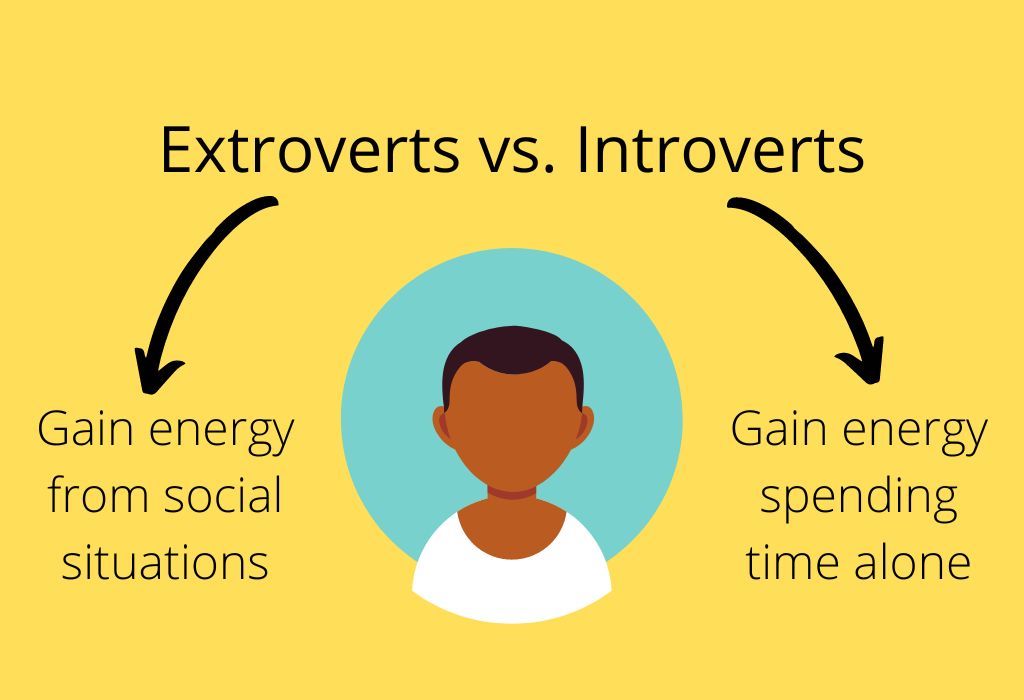
- Extroverts:
- Gain energy from social situations
- Warm, gregarious, or assertive
Example: Lord Voldemort from the Harry Potter series (a natural leader who uses his charisma to draw people to him).
- Introverts:
- Tend to be quieter
- Gain energy from spending time alone or with close friends and family
Example: Mr Darcy from Pride & Prejudice (he’s aloof, reserved, and doesn’t enjoy large social gatherings).
2. Agreeable vs. Disagreeable
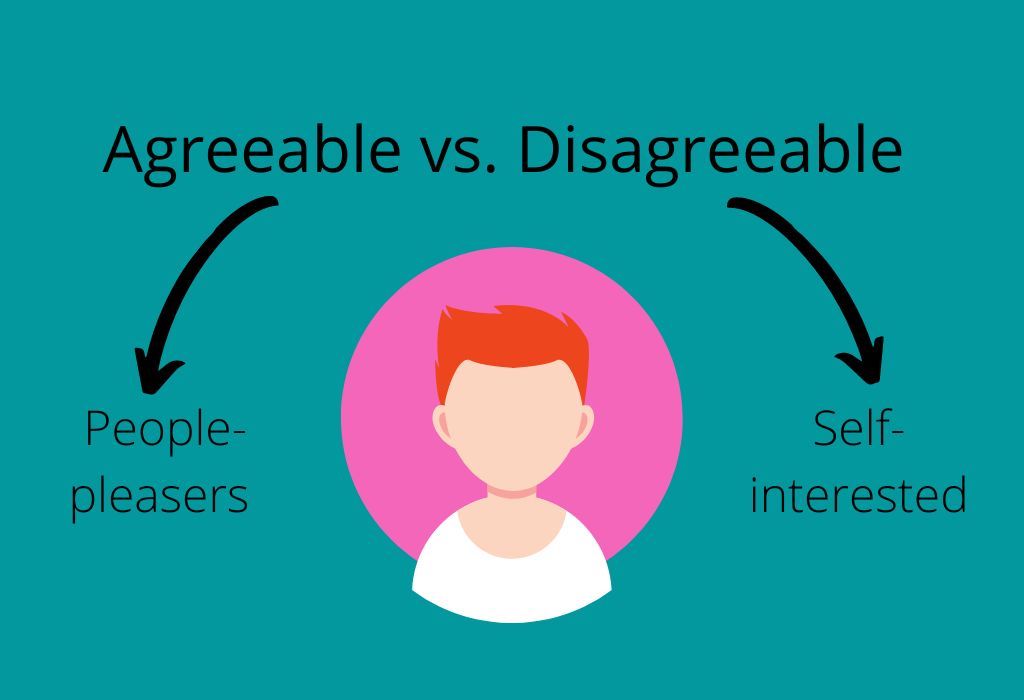
- Agreeable:
- People-pleasers
- Kind, trusting, helpful, and empathetic
Example: Yoda from Star Wars (puts the needs of others before his own and shows high levels of trust and empathy).
- Disagreeable:
- Place their own needs and wants above others
- Self-interested and lacking in empathy
Example: Han Solo at the beginning of Star Wars (arrogant and has a me-first attitude at the beginning of the series. However, this changes over time to become more agreeable, proving that certain personality traits can adapt or be learned).
3. Conscientious vs. Unscrupulous
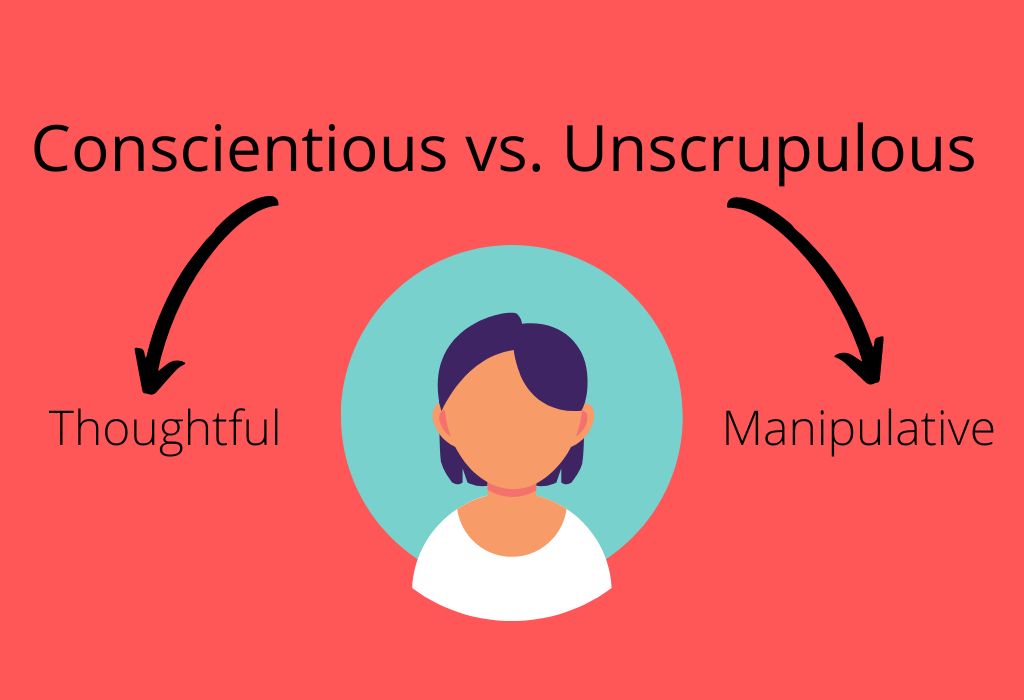
- Conscientious:
- Goal-orientated
- Show good impulse control and high levels of thoughtfulness
Example: Hermione Granger from the Harry Potter series (very focused on her goals and methodical in her approach to achieving them).
- Unscrupulous:
- Manipulative and dishonest
- Act for selfish reasons
Example: Jay Gatsby from The Great Gatsby (lies or withholds information about how he accumulated his wealth. He also manipulates the people around him to get what he wants).
4. Neurotic vs. Level-headed
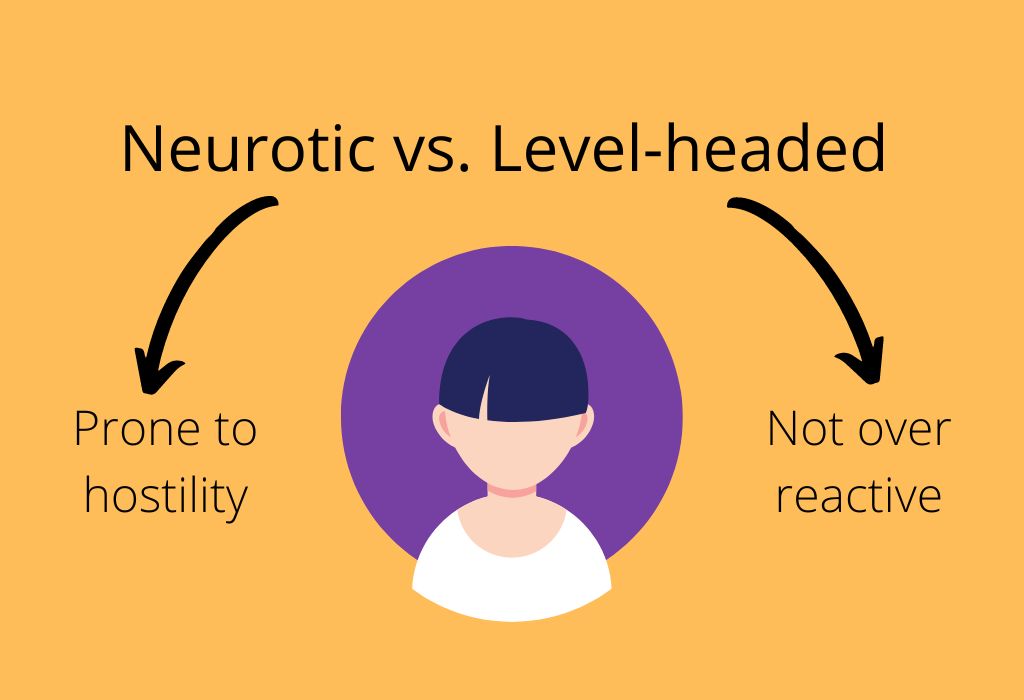
- Neurotic:
- Characterised by moodiness and emotional instability
- Prone to depression, anger/hostility, and anxiety
Example: The unnamed protagonist from Fight Club (creates an unstable and aggressive alter-ego to cope with his insomnia and anger towards society).
- Level-headed:
- Rational, even when under stress
- Calm and not overly reactive
Example: Spock from Star Trek (always reacts rationally, even in difficult situations. Never reacts with anger or hostility).
5. Openness to Experience vs. Close-minded
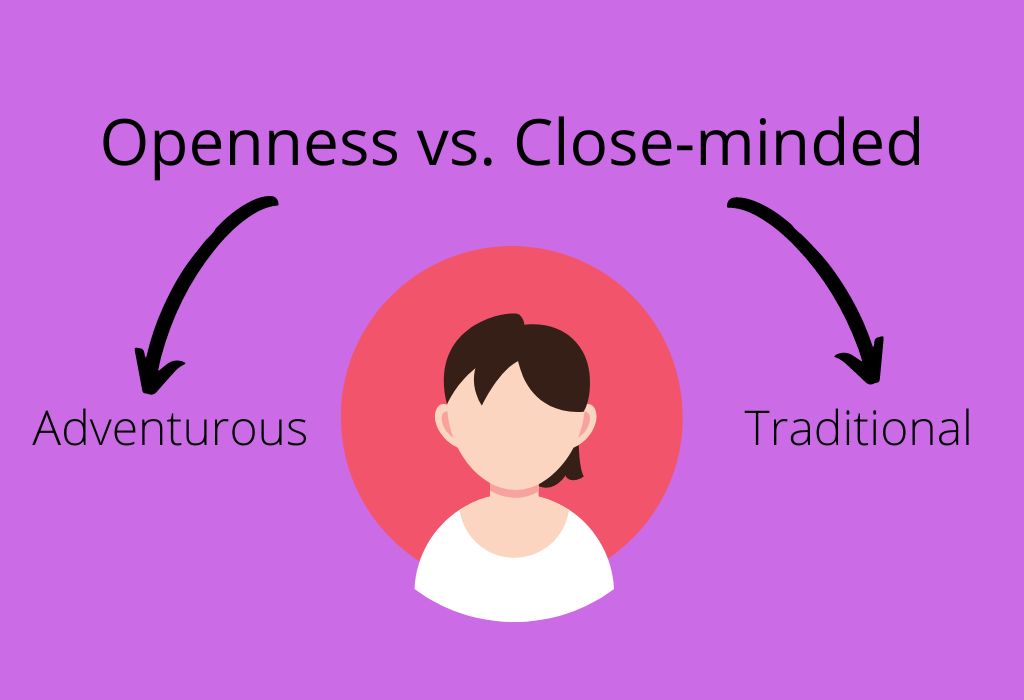
- Openness to Experience:
- Eager to learn and experience new thing
- Imaginative and adventurous
Example: Alice from Alice’s Adventures in Wonderland (not afraid to explore a fantastical new world. Open to trying anything, even eating and drinking strange things).
- Close-minded:
- Prefer the traditional and familiar
- Closed off from new ideas
Example: Javert from Les Misérables (incapable of believing in any sort of redemption for Jean Valjean, despite being shown ample evidence of how he’s changed).
Get to know your characters with the ‘Big Five’ dimensions
To be believable, your characters need to have some level of all the ‘Big Five’ dimensions. Take time to get to know your characters and flesh them out. Here are a few ways to use the ‘Big Five’ dimensions to create believable characters.
Personality Tests
Have you ever taken one of those online personality tests to see what your dominant traits are? Apply this to your characters, too. Posing as your character, take a personality test, answering how you think they would. This will help you get into your character’s mindset so you can understand, and write, them better. Who knows, your character might even surprise you with some of their answers!
Try: The Who Am I? personality test.
Venn Diagrams
Venn diagrams can be a useful way to figure out where your character’s personality traits overlap and where they don’t.
Try: This Venn Diagram that shows how certain characteristics of superheroes overlap.
Myers-Briggs Questionnaire
The Myers-Briggs questionnaire is designed to determine how different people perceive the world and what drives their decisions. This is another useful tool to help you use the ‘Big Five’ dimensions for believable characters.
Try: The 16 personalities test and this Harry Potter personality chart.
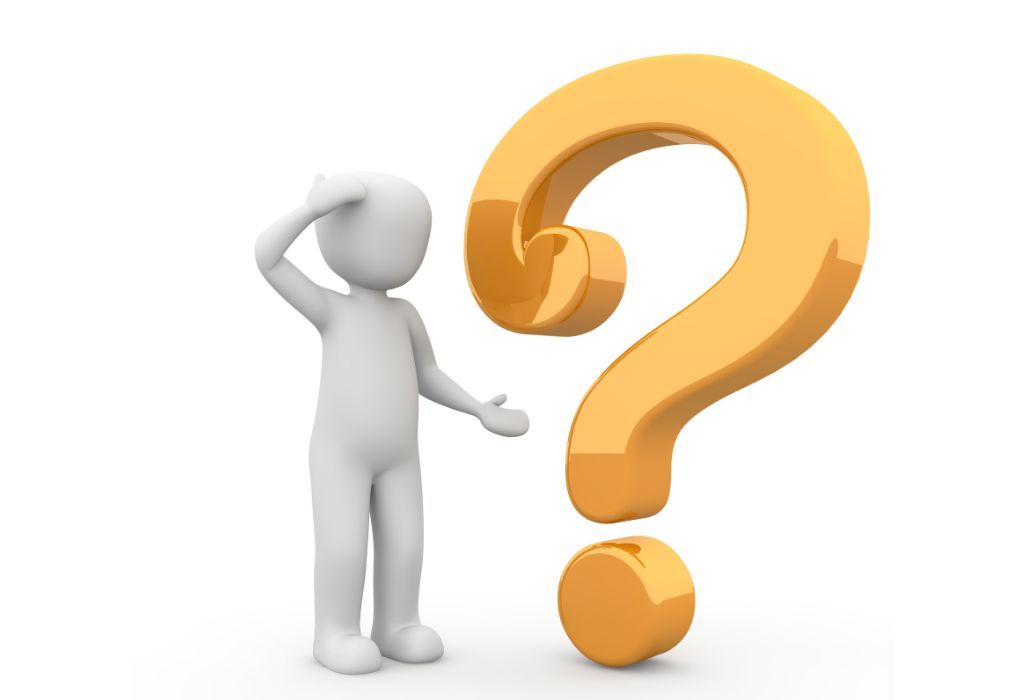
Questions to ask your characters
Once you’ve determined the dominant personality traits of each of your characters, do a little brainstorming with the following questions:
- What type of career is your character drawn to according to their personality? For example, an extroverted character might be drawn to politics, like President Snow is in The Hunger Games.
- What type of partners/friends/colleagues would they be drawn to? While like does attract like, a great way to drive a plot forward is by pitting two opposing characters against each other. For example, in the film 10 Things I Hate About You, Patrick is an extrovert while Kat shows a conscientious personality. This makes for a fun enemies-become-lovers trope.
- How would each of your characters react in a similar situation? For example, at the end of The Hobbit, Thorin is hot-headed and ready to rush into battle, while Bilbo seeks a rational and more peaceful way to resolve the conflict.
- What is your character’s main goal and how is their personality helping/preventing them from achieving it? For example, in Star Wars: A New Hope, Luke Skywalker’s openness to new experiences facilitates his goal to leave Tatooine and seek adventure.
- How does your character’s personality influence what they believe about the world? For example, the neurotic character in Fight Club is frustrated by wage slavery and consumerism. He ultimately believes the only way to break free is through extreme violence.
Can my character’s personality change?
Yes! While someone’s personality is generally stable and consistent throughout their life, this doesn’t mean there isn’t room for creative change when you’re writing your characters.
However, before you completely turn your character’s ‘Big Five’ dimensions upside down, make sure that any change is believable within the larger plot. If you want to transform a cowardly character into a brave one, for example, you should incorporate plot points throughout the book that will eventually justify such a change. In this case, present opportunities for growth where the character learns to trust in themselves and their abilities. This way, it’s believable when the coward shows bravery at an important moment in the story.
If this sounds like a lot, it’s because it is. But while writing can feel like a lonely, single-person endeavour, it shouldn’t be. After you have written your story and self-edited it, enlist beta readers to help pinpoint which characters feel real and which don’t. Similarly, if you feel you need professional help, The Open Book Editor’s author services might be perfect for you. Our professional editors can help you with every stage of character development, whether you’re brainstorming, editing, or simply worried your characters are falling flat on the page.
